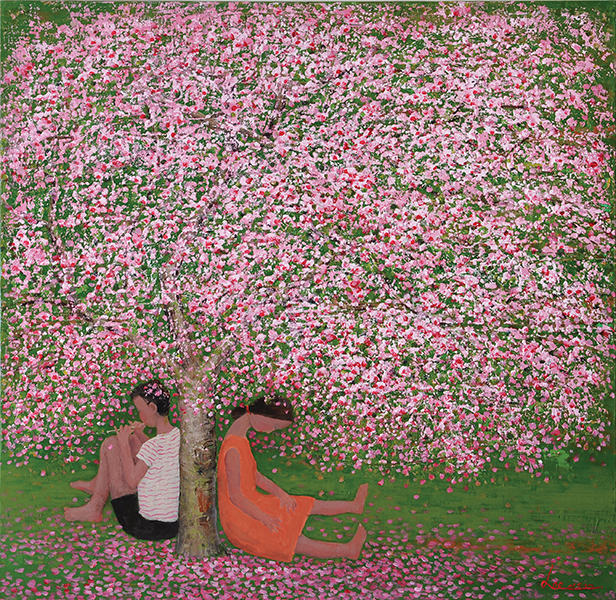This is one of the most glorious moments in WAG country for it’s the height of cherry blossom season when the blossoms of any of several trees of the genus Prunus — especially the Japanese cherry (Prunus serrulata), or sakura in Japan — turn the landscape into an American Impressionist painting, carpeting paths and crusting ponds with their delicate pink and white petals.

At the end of April, the annual return of the cherry blossom — introduced to the United States by Japan in the early 20th century — was greeted with festivals at the Pelham Art Center and Turnure Park in White Plains, home to more than 100 Japanese cherry trees. Other wonderful spots for cherry blossom viewing include the Donald M. Kendall Sculpture Gardens at PepsiCo in Purchase, the New York Botanical Garden in the Bronx, Central Park in Manhattan and the Brooklyn Botanic Garden, where the fleeting, floating beauty of the blossoms makes them all the more precious.
Of course, it’s possible to have cherry blossoms even amid an early spring snow. They “have flayed us” — to borrow from H.D.’s poem “Orchard” — in the pages of “Cherry Blossoms: Photographs by Jake Rajs” (Rizzoli, 2006). And they flay us anew in the works of contemporary South Korean painter Lee Kui Dae, recently seen at Canfin Gallery in Tarrytown. Lee’s folk-style, mixed-media canvases belie a complex technique of layering on plaster for a trompe l’oeil effect and stippling the flowers that often serve as prominent backdrops and erotic symbols as well as memories of his childhood in a small village in South Korea.
Lee — the last name is presented first in Korean culture — earned a degree in art from the University of Seoul, teaching the arts in South Korea before moving to Paris in 1995. There he earned another art degree at the University of Paris and now divides his time between the City of Light and his native land. (Jean-Claude Canfin, owner of Canfin Gallery, says he communicates with Lee, who speaks no English, in French.)

Lee’s paintings are in collections worldwide, where they are no doubt admired for their Picasso-like Primitivism. The angular figures with their bowed heads have a sorrowing, contemplative quality; the dreaming female nudes with their arms thrown over their heads as they lie on a golden, Klimt-like bed of yellow flowers or against a backdrop of burgeoning bulbs, a sensual one.
“Mythology is a major theme in my work,” Lee says in his artist statement. “My artistic mission is to discover an identity, and origin to life, as well as the essence of love that modern mankind has lost.”
The cherry blossom has been a controversial symbol in Korea, where it represented Japan’s harsh colonial rule and occupation during World War II (1910-45). Many of the trees were subsequently struck down. There was also some confusion over whether the Japanese Yoshino cherry and the Korean King cherry were one and the same — an issue that wasn’t resolved until a 2016 study.
In Lee’s work, the cherry blossom is the lacy backdrop for amour (“Murmure”), a spreading haven for rest and reflection (“Printemps,” “Promenade II”).
His works are a reminder that even in the most persistent of winters, it’s always cherry blossom season in the heart.
Fans of nature and Canfin Gallery will also enjoy the serene seascapes in “Tjasa Owen: Water Stories,” on view there through May 20. For more, visit canfingallery.com.




